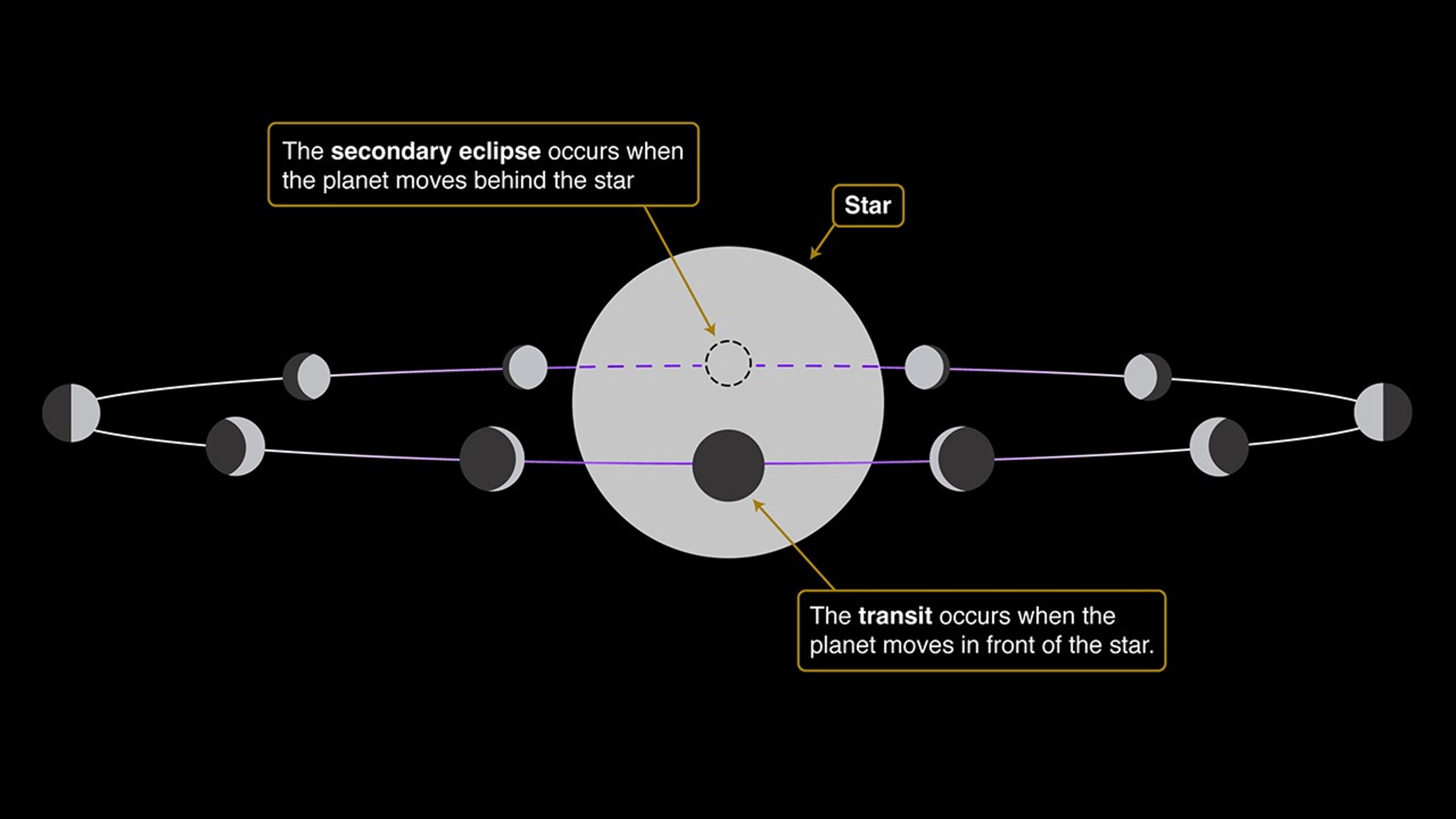1 min read
Orbit of a Transiting Exoplanet (Transit and Secondary Eclipse)

A transit, also called a primary eclipse, occurs when a planet moves between its star and the telescope, blocking some of the starlight. A secondary eclipse occurs half-an-orbit later, when the planet moves behind the star and all of the light coming from the planet is blocked. Whether a planet is transiting or not depends on whether we are observing its orbit from the side (transiting) or from above (not transiting).
Share
Details
Last Updated
Sep 30, 2025
Contact
Media
Laura Betz
NASA’s Goddard Space Flight Center
Greenbelt, Maryland
laura.e.betz@nasa.gov






























